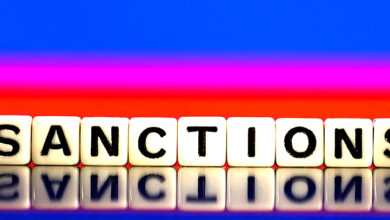Japan probably spent a record amount to support the yen in October.

Japan will say on Monday that it probably spent a record amount this month to prop up the yen through currency intervention. Market players are looking for hints about how much more the government might step in to stop the yen’s sharp fall.
After the yen fell sharply to a 32-year low of 151.94 to the dollar on Oct. 21, Japan probably spent a record 5.4 trillion yen ($24.9 billion) on unannounced intervention on Oct. 21 and 24. This was in response to the yen dropping sharply to a 32-year low of 151.94 to the dollar on Oct. 21.
Related: Japanese Yen Mixed Due to Dovish BoJ, Chinese Yuan Weighed Down by COVID Fears
That would be almost double what Tokyo spent last month when it bought yen and sold dollars for the first time in more than 20 years.
The most recent intervention caused the dollar to drop by more than 7 yen right away, but the Japanese yen has since come under more pressure.
The dollar was up again on Monday, up 0.4% to 148.08 yen, as good data on U.S. consumer spending brought attention to persistent inflation and lowered expectations for the Federal Reserve to raise interest rates more slowly. Meanwhile, the Bank of Japan remained committed to keeping interest rates very low.
Japan’s currency intervention data, which includes monthly totals released at the end of each month and daily spending numbers released in quarterly reports, is closely watched for clues about how much more Japan might be willing to spend on the currency market.
On Monday at 7 p.m. (1000 GMT), the Ministry of Finance will say how much was spent on intervention from September 29 to October 27.
Even more attention will be paid to Monday’s numbers because the Finance Ministry hasn’t said anything about what it seems to be doing in the market this month. This is a sneaky way to intervene in the market. It confirmed the buying of yen that happened last month right after it happened.
But even though the markets want to know how much Japan is willing to spend to step into the market, there is little doubt that, at least for the near future, it has enough money to keep doing so.
In fact, Masato Kanda, Japan’s top currency diplomat, has said that the government can use any means necessary to intervene.
At the end of September, Japan had about $1.2 trillion in foreign reserves, which was the second-most after China. About a tenth of that was in deposits with foreign central banks and the Bank for International Settlements, which can be easily used to sell dollars and buy yen.
Also, four-fifths of Japan’s foreign reserves are in the form of U.S. Treasuries, which were bought when the yen was going up when the government intervened to buy dollars. Those are easy to turn into money.
Related: Wages, not yen, will determine when Japan exits its ultra-low interest rate regime.
Other assets include gold, reserves at the International Monetary Fund (IMF), and special drawing rights (SDRs) from the IMF. Ministry officials say it would take time to get dollars from these assets, though.





